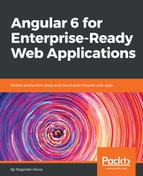In this chapter, you learned how to create a container-based Continuous Integration environment. We leveraged CircleCI as a cloud-based CI service and highlighted the fact that you can deploy the outcome of your builds to all major cloud hosting providers. If you enable such automated deployment, you will achieve Continuous Deployment (CD). With a CI/CD pipeline, you can share every iteration of your app with clients and team members and quickly deliver bug fixes or new features to your end users.
We also discussed the importance of good API design and established Swagger as a tool that is beneficial to frontend and backend developers alike to define and develop against a live data-contract. If you create a Swagger mock server, you can enable team members to pull the mock server image and use it to develop their frontend applications before backend implementation is completed.
Both CircleCI and Swagger are highly sophisticated tools in their own ways. The techniques mentioned in this chapter are straightforward on purpose, but they are meant to enable sophisticated workflows, giving you a taste of the true power of such tools. You can improve upon the efficiency and the capability of this technique vastly, but the techniques will depend on your specific needs.
Armed with CI and mocked APIs that we can send real HTTP requests to, we are ready to iterate rapidly, while ensuring a high-quality deliverable. In the next chapter, we will dive deep into designing an authorization and authentication experience for your line-of-business app using token-based authentication and conditional navigation techniques to enable a smooth user experience, continuing the Router-first approach.
